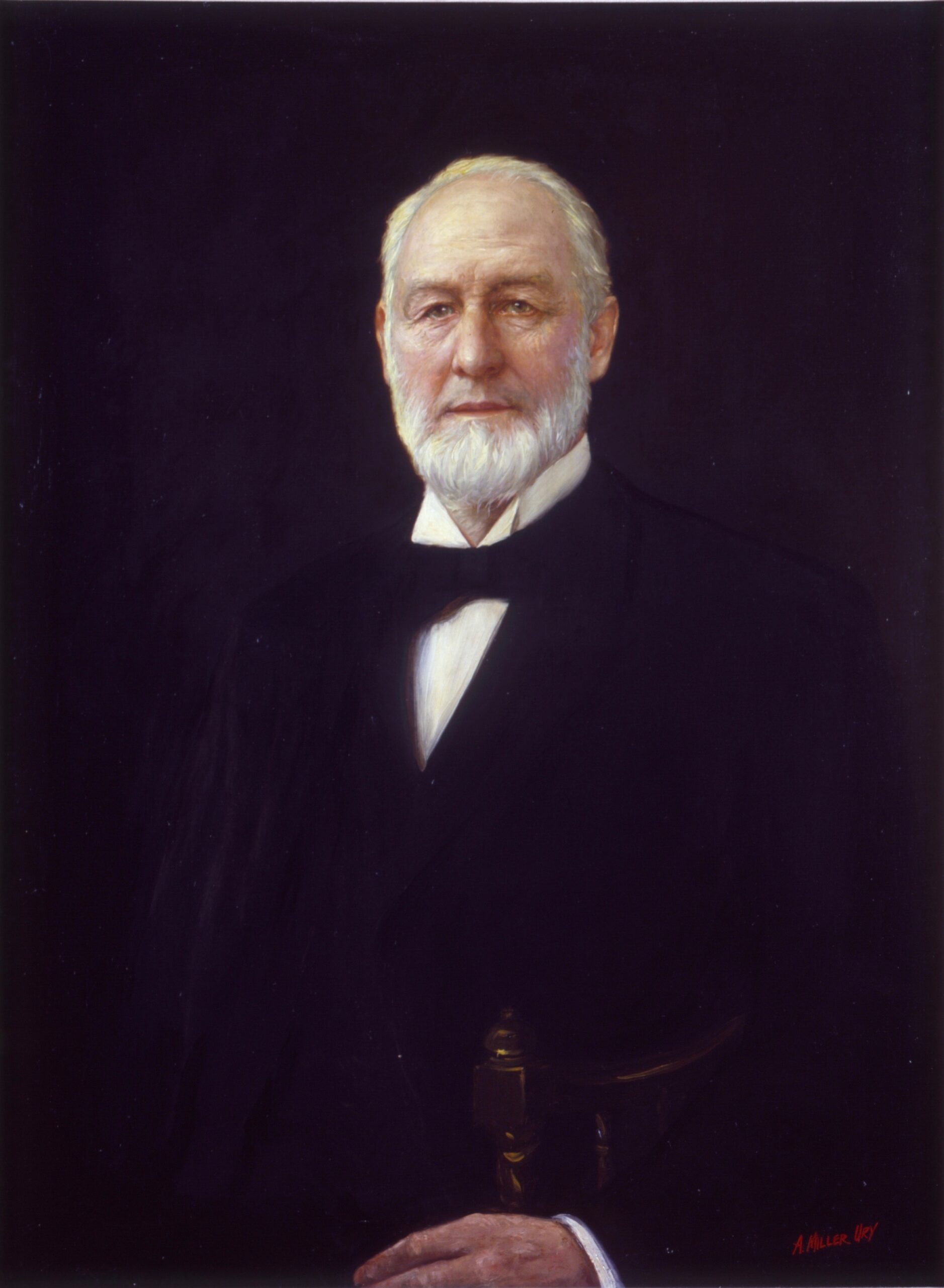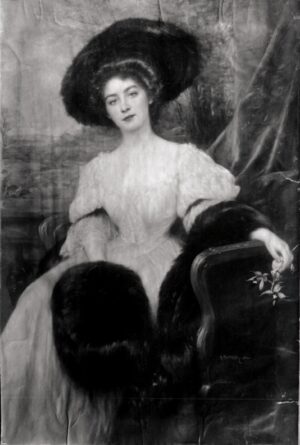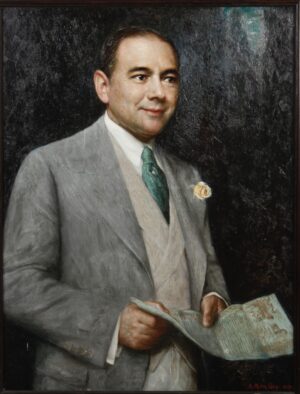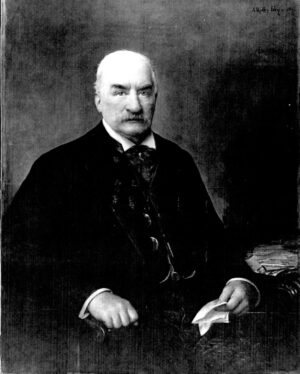WILDER, Amherst
Description:
Half-length, dressed in black, one hand resting on a chair arm. Oil on canvas.
Location:
The Amherst Wilder Foundation, 451 Lexington Parkway North, St. Paul, Minnesota 55104, U.S.A.
Bibliography:
Merrill E. Jarchow, Amherst H. Wilder and his Enduring Legacy to St. Paul, published by the Wilder Foundation, St. Paul, p.190.
Amherst H. Wilder was a St. Paul pioneer businessman and philanthropist who arrived in the city in 1859 from New York. Why he came to St. Paul is unknown. He was born in 1828 and died of a kidney infection on November 11, 1894 at the age of 66. His business activities included interests in mercantile, real estate, transportation (including freight, stage coach, and railroads), banking, and lumber companies.
He married Fanny Spencer Wilder in 1861 and they had one daughter, Cornelia Day Wilder. Family trips to Europe in the late 1880s prompted Amherst H. Wilder to write a will in case he and his family died traveling at sea. If this occurred, it specified that his fortune was to be used for charitable purposes in St. Paul.
Fanny Wilder (1837 – 1903) recorded that on March 20/22, 1895, she paid Muller-Ury $1000 for the portrait. However, in a letter amongst the artist’s papers, dated February 6, 1895 her daughter wrote as follows:
‘Dear Sir,
We regret very much to learn this morning neither of the two letters written you had reached their destination. I wrote you immediately so that you might know how absolutely satisfied we are with the almost speaking portrait of my dear Father – the face & its expression are absolutely perfect, but when you are here in the Spring, we shall ask you to alter the hand & figure a trifle –
Regarding the price; we knew nothing of the price agreed upon between Mr. Hill and yourself and our friend and business manager Mr. Watkins forwarded your letter to him. As soon as we have his reply, Mr. Watkins will communicate with you.
My mother and I feel as though we wanted to thank you for the wonderful likeness you have made for us – it is far more satisfactory than ever the photograph was –
Yours truly, C. Day Wilder.’
On Saturday February 9, 1895 Mary T. Hill, then on holiday in the South of France, recorded in her journal whilst staying in Monte Carlo, ‘…letter from Day Wilder expressing great satisfaction with her fathers portrait which Muller-Uri painted with papas help from photographs.’ (Minnesota Historical Society Papers).
The picture unfortunately bears a modern signature in the bottom right hand corner ‘MILLER-URY’. Was the picture cut down and his original signature lost?





